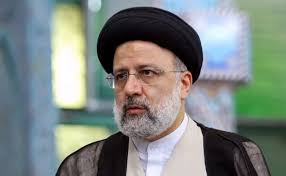
Iran’s Aviation Tragedy Highlights Impact of Western Sanctions
The recent helicopter crash that claimed the lives of Iran’s President Ebrahim Raisi and Foreign Minister Hossein Amirabdollahian has reignited discussions about the devastating impact of Western sanctions on Iran’s aviation sector. The tragic incident underscores the urgent need to address the challenges faced by Iran’s aging aircraft fleet.
The ill-fated Bell 212 helicopter, described as at least three decades old, raises questions about why high-ranking officials were flying in such outdated aircraft. According to US State Department spokesperson Mathew Miller, the helicopter was a staggering “45-year-old” relic. This revelation sheds light on the dire state of Iran’s aviation infrastructure.
Decades of sanctions imposed by Western nations, particularly the United States, have severely hampered Iran’s ability to modernize its aviation fleet. Restrictions on purchasing new aircraft, obtaining spare parts, and accessing technical expertise have left Iran with a fleet of aging and unreliable planes.
The sanctions, aimed at isolating Iran and crippling its economy, have effectively barred Tehran from acquiring Western-made aircraft and necessary components. Even Russian aircraft, which could potentially provide alternatives, are limited by their reliance on US-made parts.
As a result, the average age of Iran’s passenger aircraft fleet is nearly 28 years, more than double the global average. Iran Air, the national carrier, still operates planes that are over four decades old, highlighting the stark contrast with airlines in other countries.
Studies have consistently shown a correlation between aircraft age and safety, with older planes facing increased risks of accidents. Iran’s poor aviation safety record, exacerbated by decades of sanctions, underscores the urgent need for reform and modernization.
While the 2015 Iran nuclear deal offered a glimmer of hope by temporarily lifting some sanctions and enabling aircraft deals with Boeing and Airbus, subsequent reversals have dashed those prospects. The abrupt reversal of sanctions relief by the Trump administration in 2018 further exacerbated Iran’s aviation woes.
The tragic helicopter crash serves as a stark reminder of the human cost of geopolitical tensions and punitive measures. As the international community mourns the loss of lives, there is a pressing need for dialogue, cooperation, and humanitarian considerations to address the root causes of such tragedies.
Moving forward, concerted efforts must be made to lift sanctions that hinder Iran’s access to safe and modern aviation technology. Ensuring the safety of air travel is not only a matter of national interest but a humanitarian imperative that transcends geopolitical differences. Only through collective action can we prevent future aviation tragedies and pave the way for a safer sky for all.
